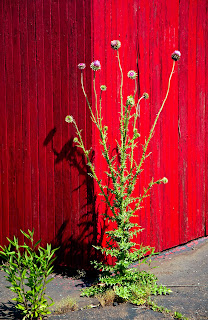Easton Red, 2010
I don’t know how it is with those of you who illustrate with pencils and ink or paint with oils and watercolors. Do you ever put that first line down on the paper or canvas and then decide to change the subject to something completely different from what you originally intended to paint?
I would guess that this doesn’t happen much because illustrators and painters are probably more contemplative by nature and inclined to re-arrange elements of the painting, if they do it at all, once the basic landscape’s in place.
Photographers used to be this way, too. They hauled heavy tripods and huge box cameras and large film plates. They were more contemplative and more accustomed to sitting in one spot until the circumstances were just right (unless they were Matthew Brady, who we now know stacked dead Civil War soldiers up like manikins in some of the pictures for which he’s so famous).
This is also how a lot of us were when we started out with our Pentax and Nikon 35mm SLRs. We had some of the most portable and flexible high quality cameras ever made, but we were still influenced by the costs of film and processing. When you had just 12, 24 or 36 total opportunities in a roll of film to get something right you were pretty careful to stick to whatever subject you’d planned to shoot.
That’s all gone now. There remain photographers who do beautiful work with large format cameras and others who persist in believing that the only legitimate photograph is one captured on film. But whatever your bias, the trade-off of the high cost of today’s increasingly sophisticated digital cameras is that at least you can shoot with abandon without having to worry about any immediate direct cost.
The more important point, though, is that if your goal is to create good photographs, you can go out and take the picture you came to take plus whatever pictures you found that were more satisfying.
I’m a big proponent of having some idea of what you’re looking for when you go out to take personal pictures. But as I’ve also written here many times before, I’m okay with forgetting about those original intentions when something better presents itself.
In fact, I’m coming to look upon that original goal as little more than an excuse that established where you might go to start taking pictures. But what actually get excited about shooting might end up being something different altogether.
That’s exactly what happened with Easton Red, above. I’d set out to take pictures of an abandoned factory and that’s exactly what I did. But the picture I took and was far happier with that morning was this picture of a weed in front of a bright red shed across the street from the old factory.
Life is fleeting. Why be stuck behind a goal when there’s all this color out there?









Wow--great photo! love the red here.
ReplyDelete